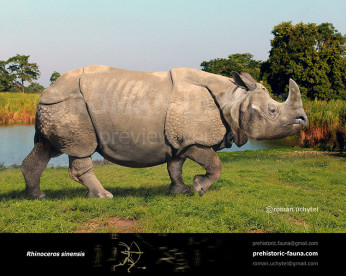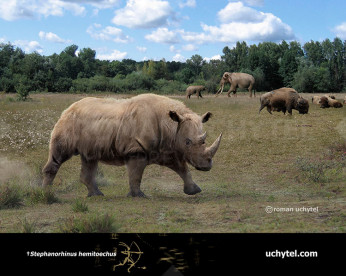Etruscan rhinoceros (Stephanorhinus etruscus)
142142Etruscan rhinoceros (Stephanorhinus etruscus Falconer, 1868)
Order: Perissodactyla
Family: Rhinocerotidae
Temporal range: late Pliocene - Early Pleistocene of Eurasia
Dimensions: length - 3,7 m, height - 200 сm, weight - 3000 kg
Stephanorhinus is an extinct genus of rhinoceros native to northern Eurasia that lived during the middle and early late Pleistocene epoch. It had two horns and was a relatively large rhino. It weighted over 3,000 kg and measured about 1.80 - 2 m tall and 3.20 - 4 m in length, having a size similar to a white rhino. In the late Pleistocene, there were two species of Stephanorhinus in Eurasia, the large Merck's rhinoceros Stephanorhinus kirchbergensis and the narrow-nosed rhinoceros Stephanorhinus hemiotechus. Both species may have evolved from Stepahnorhinus etruscus. The narrow-nosed rhinoceros appeared in Europe in the early middle Pleistocene. It is known here from many localities between, Spain, Italy, Germany and the British Islands. Apart from Europe it is also known from Syria, Israel, the Caucasus and from one late Pleistocene locality close to Lake Baikal.
Etruscan rhinoceros (Stephanorhinus etruscus Falconer, 1868)
Order: Perissodactyla
Family: Rhinocerotidae
Temporal range: late Pliocene - Early Pleistocene of Eurasia
Dimensions: length - 3,7 m, height - 200 сm, weight - 3000 kg
Stephanorhinus is an extinct genus of rhinoceros native to northern Eurasia that lived during the middle and early late Pleistocene epoch. It had two horns and was a relatively large rhino. It weighted over 3,000 kg and measured about 1.80 - 2 m tall and 3.20 - 4 m in length, having a size similar to a white rhino. In the late Pleistocene, there were two species of Stephanorhinus in Eurasia, the large Merck's rhinoceros Stephanorhinus kirchbergensis and the narrow-nosed rhinoceros Stephanorhinus hemiotechus. Both species may have evolved from Stepahnorhinus etruscus. The narrow-nosed rhinoceros appeared in Europe in the early middle Pleistocene. It is known here from many localities between, Spain, Italy, Germany and the British Islands. Apart from Europe it is also known from Syria, Israel, the Caucasus and from one late Pleistocene locality close to Lake Baikal.

-797x638.jpg)
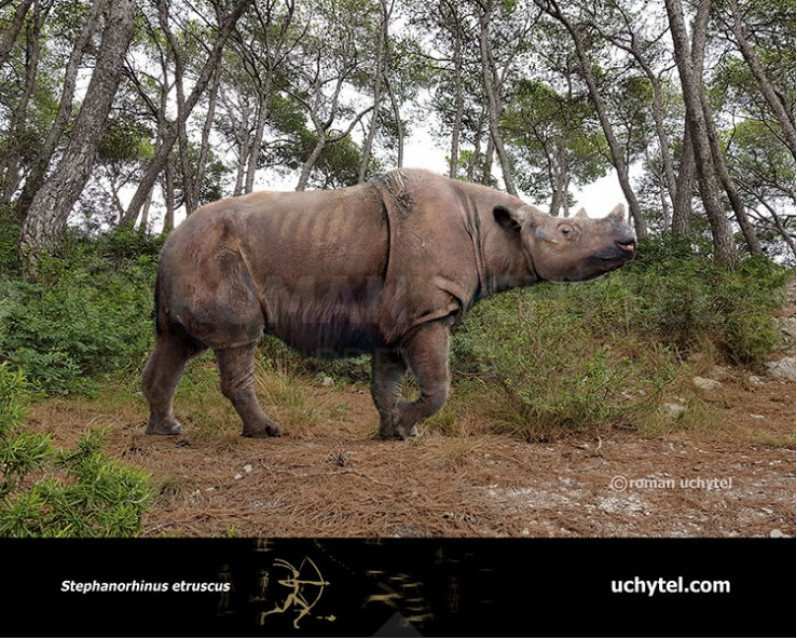
1-797x638.jpg)
l-797x638.jpg)
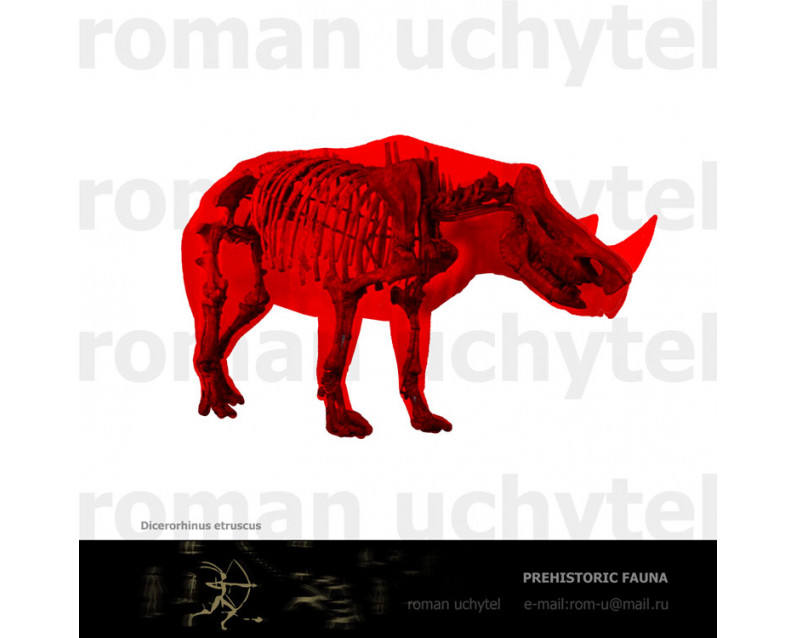
-70x56.jpg)

1-70x56.jpg)
l-70x56.jpg)

-346x277.jpg)
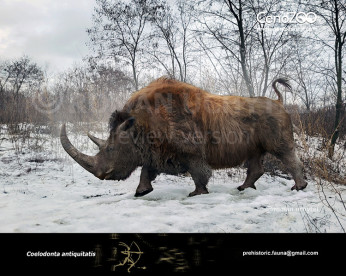

1-346x277.jpg)
